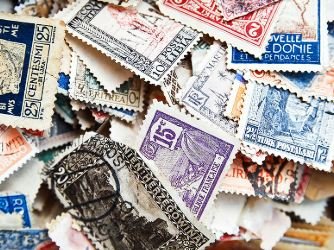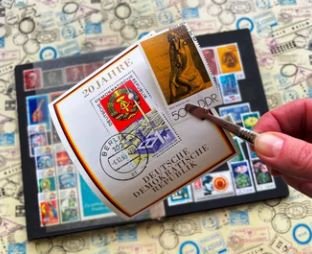Stamp collecting is one of the most rewarding hobbies, blending history, art, and a bit of luck. One of the most exciting and unique areas of stamp collecting is collecting errors and misprints in stamps. These stamps, with their unexpected flaws, can be some of the rarest and most valuable pieces in a collection. Whether you’re a novice or a seasoned philatelist, exploring the fascinating world of collecting errors and misprints in stamps can open the door to discovering hidden gems. However, with this thrill comes certain risks, and understanding them is crucial for making wise collecting decisions.
In this article, we’ll delve into the world of collecting errors and misprints in stamps, uncovering why these stamps are so valuable, how to identify them, and the risks involved in pursuing them as part of your collection.

What Are Errors and Misprints in Stamps?
When we talk about collecting errors and misprints in stamps, we’re referring to stamps that have been produced with some sort of mistake during the printing process. These mistakes can occur at various stages, from the design to the printing press, and they can range from small, inconspicuous flaws to obvious and dramatic errors. The most common types of errors and misprints in stamps include:
- Printing Errors: These include issues such as ink smudges, off-center images, or incorrect colors.
- Die Cuts and Perforation Errors: Mistakes made in cutting the stamp, such as missing perforations, incomplete die cuts, or misaligned perforations.
- Text and Design Errors: Incorrect wording, missing text, or reversed designs.
- Color Misprints: When colors are wrong or mixed up in the printing process, creating a significant variation from the original design.
Collecting errors and misprints in stamps is considered a specialized niche in philately, but for those who enjoy the hunt, the rewards can be significant. A misprinted stamp can be worth far more than its original, unblemished counterpart, especially if it is rare or represents a significant historical blunder.
Why Are Errors and Misprints So Valuable?
The allure of collecting errors and misprints in stamps lies in their rarity and the story they tell. While most stamps are printed in large quantities with precise attention to detail, stamps that have errors are the opposite—they’re unique and unexpected. For collectors, these errors are like little pieces of history, frozen in time, representing moments when the normal process was disrupted.
Here are some reasons why collecting errors and misprints in stamps can be so valuable:
- Rarity: Printing mistakes are not intentional, and only a few stamps are usually affected. As a result, they are extremely rare and in high demand among collectors.
- Historical Significance: Some errors are related to significant historical events or cultural symbols, adding a layer of historical importance to their rarity.
- Unique Appeal: Misprints often have an unusual or striking visual appeal. This uniqueness makes them stand out in a collection and increases their desirability.
- Potential for Increased Value: The value of an error or misprint can increase dramatically, especially if the error is discovered to be a one-of-a-kind item or part of a very limited print run.
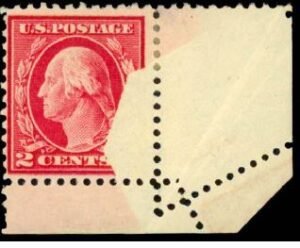
Types of Errors and Misprints to Look For
When collecting errors and misprints in stamps, it’s important to know what to look for. While the list of possible errors is long, here are some of the most common—and valuable—types of misprints to consider:
- Inverted Centers: These are among the most famous errors in stamp collecting. An inverted center occurs when the central image of the stamp is printed upside down. A notable example is the 1918 Inverted Jenny stamp, one of the most famous and valuable misprints in history.
- Color Misprints: Sometimes the wrong color is used during the printing process, leading to a stamp that looks completely different from the original design. This can be a minor variation or a more dramatic color shift.
- Misplaced Perforations: Perforation errors occur when the stamps are not cut properly, leaving misaligned or missing perforations. These errors can make stamps more aesthetically intriguing and increase their rarity.
- Overprints: Occasionally, stamps are printed with additional markings (overprints) in the wrong color, with the wrong text, or in the wrong position. These types of errors can happen when stamps are reused or repurposed for special purposes.
- Missing or Wrong Text: A misprint might involve a stamp where the text is either missing entirely or printed incorrectly. For example, a stamp commemorating an event might have the wrong date or a misprinted country name.
- Double Prints: Double printing happens when the image or text is printed twice on the same stamp, often slightly offset, giving the stamp a blurry or duplicated look.
Risks of Collecting Errors and Misprints in Stamps
While collecting errors and misprints in stamps can be thrilling and potentially lucrative, there are certain risks that collectors need to be aware of. Here are some of the key risks you should consider:
1. Authenticity Issues
The world of collecting errors and misprints in stamps is rife with counterfeits and reproductions. A mistake or error in a stamp is a great temptation for forgers, and some counterfeit stamps are incredibly well-made, making them difficult to distinguish from the real thing. Before purchasing any rare errors, it’s crucial to verify their authenticity with a trusted dealer or expert.
2. Overpaying for Common Errors
Some errors may seem rare or valuable at first glance, but in reality, they are relatively common. A simple perforation error or a slight color variation may not be as rare or valuable as you might think. Make sure to do your research before committing to a purchase to avoid overpaying for a common mistake.
3. Condition Matters
The condition of errors and misprints in stamps plays a huge role in their value. A stamp in pristine condition can fetch a much higher price than one that is torn, faded, or damaged. When collecting errors, it’s essential to inspect the stamp’s condition thoroughly before making an investment. Even slight creases or discoloration can reduce the value of a rare misprint significantly.
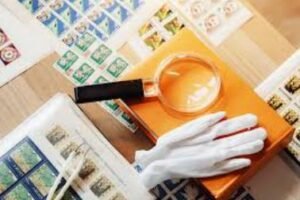
4. Limited Knowledge
The world of collecting errors and misprints in stamps can be complex, especially for beginners. Without enough knowledge, you may miss identifying a rare error or mistakenly classify a regular stamp as a misprint. Consulting experts or learning from trusted resources is crucial to avoid making costly mistakes.
5. Market Volatility
The market for rare stamps can fluctuate, and while some misprints will always have high demand, others may not retain their value in the long term. Collectors should be aware of market trends and pricing before diving into collecting errors and misprints in stamps.
How to Get Started Collecting Errors and Misprints
If you’re interested in collecting errors and misprints in stamps, the best approach is to start small and gradually build your knowledge and collection. Here are a few tips to help you begin:
- Do Your Research: Read up on the history and specifics of famous errors and misprints. Learning about the mistakes that have occurred in stamp history will give you a strong foundation for recognizing similar errors.
- Seek Expert Advice: Consult with philatelic societies or stamp dealers who specialize in errors and misprints. They can help you identify authentic stamps and provide valuable advice on your collection.
- Attend Stamp Shows: Stamp shows are great places to find rare errors, as they often feature dealers who specialize in rare and misprinted stamps. You’ll also have the opportunity to meet experienced collectors who can offer insights and advice.
- Verify Authenticity: Always verify the authenticity of an error or misprint before making a purchase. Consider investing in stamp certification services to ensure that the stamp is genuine.
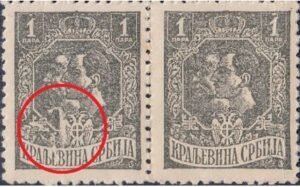
Conclusion
Collecting errors and misprints in stamps is a fascinating and rewarding niche in philately that allows collectors to uncover hidden gems while learning about the history and intricacies of stamp production. While the potential for discovering valuable and rare stamps is exciting, it’s important to be aware of the risks involved. Ensuring authenticity, understanding market values, and educating yourself about stamp conditions are essential to becoming a successful collector. By navigating these challenges wisely, you can enjoy the thrill of collecting errors and misprints in stamps and potentially build a collection of rare and valuable pieces that tell the stories of both human error and historical significance.


